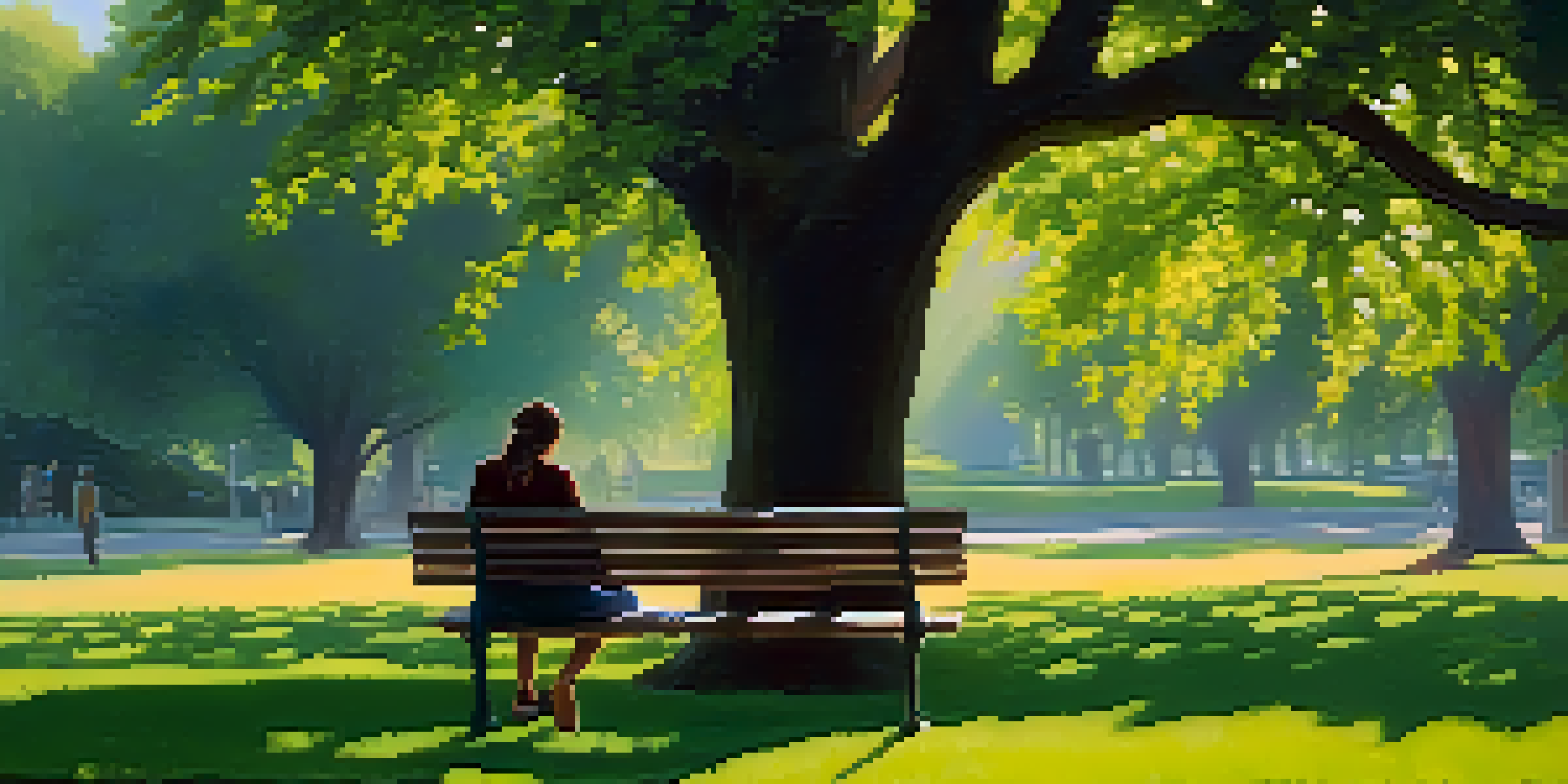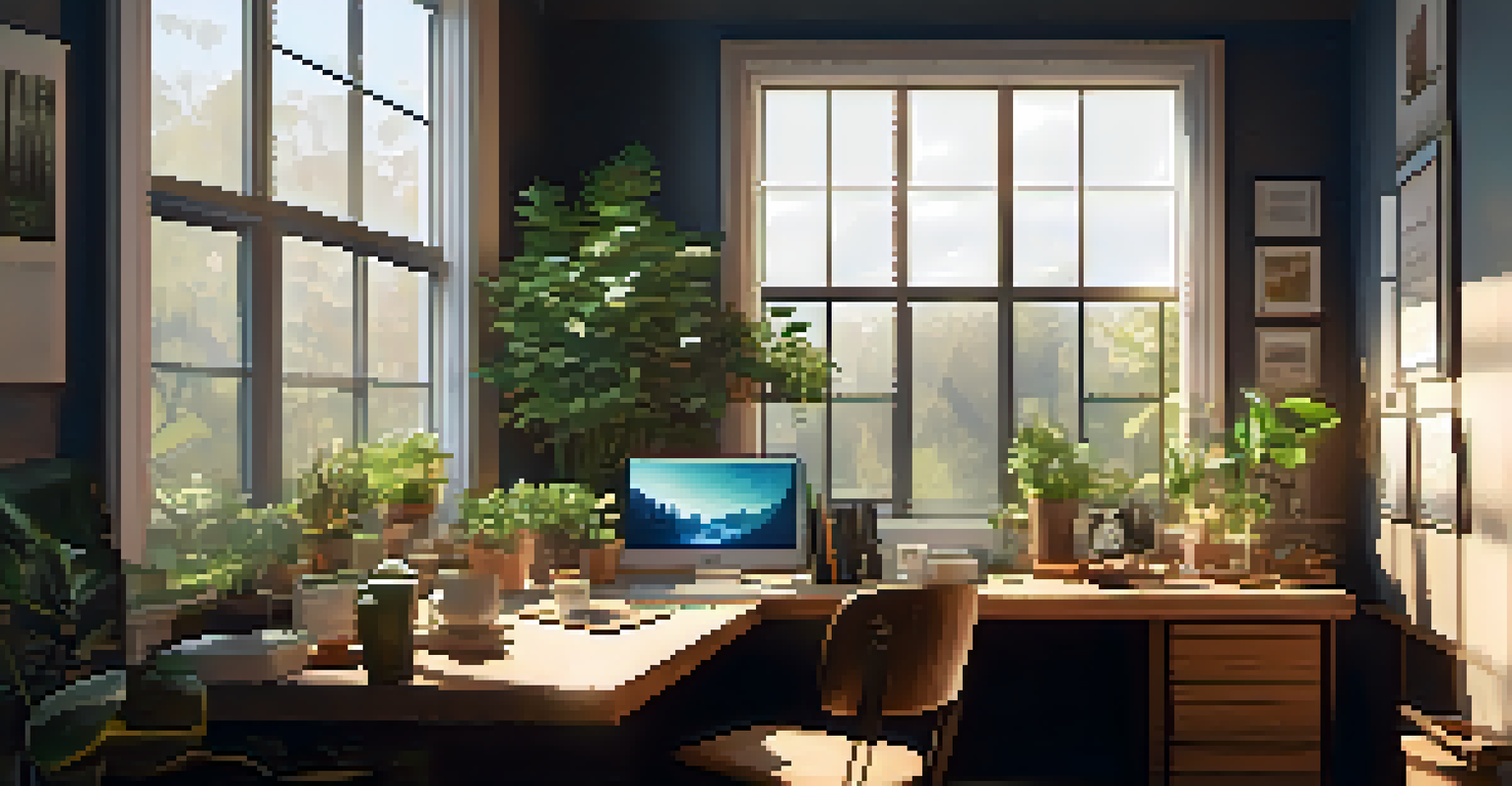Understanding Light Exposure and Its Effects on Mood Disorders

What is Light Exposure and Why Does It Matter?
Light exposure refers to the amount of natural or artificial light an individual receives. It's not just about brightness; it encompasses the quality and duration of light as well. Understanding light exposure is essential because it can significantly affect our biological rhythms, mood, and overall mental health.
If you want to brighten your mood, you need to brighten your surroundings.
Our bodies have a natural clock known as the circadian rhythm, which dictates sleep patterns and hormonal changes. When light hits our eyes, it signals this clock, influencing our feelings of alertness and well-being. Thus, the type and timing of light we experience can play a crucial role in managing mood disorders.
For example, individuals with Seasonal Affective Disorder (SAD) often experience depression during the darker months of the year. This condition highlights just how potent light exposure can be on our mental state, making it vital to explore further.
The Science Behind Light and Mood Disorders
Research has shown a strong connection between light exposure and the production of serotonin, a hormone that contributes to feelings of happiness. When we get enough natural light, our bodies produce more serotonin, which can help improve mood. Conversely, reduced light exposure can lead to lower serotonin levels, contributing to feelings of sadness or depression.

Additionally, light exposure influences melatonin production, a hormone that regulates sleep. Poor sleep quality is often linked to mood disorders, creating a vicious cycle: lack of light can lead to poor sleep, which in turn can worsen mood disorders.
Light Exposure Impacts Mood
The amount and quality of light exposure can significantly influence our mood and mental health.
Understanding this relationship can empower individuals to make changes in their daily routines, such as spending more time outdoors or using light therapy to combat low mood, especially during winter months.
How Seasonal Changes Affect Mood Disorders
As seasons change, so does the amount of natural light we receive. During the fall and winter, shorter days and longer nights can lead to a decrease in light exposure, triggering mood disorders in some individuals. This phenomenon is often referred to as Seasonal Affective Disorder (SAD).
The sun is a daily reminder that we too can rise again from the darkness, that we too can shine our own light.
SAD tends to manifest as depressive symptoms, such as fatigue, irritability, and a lack of interest in activities. It’s essential to recognize these seasonal patterns and how they correlate with light exposure. Many people might not realize that their mood dips correspond with the arrival of darker days.
By being mindful of these changes, individuals can proactively seek out light therapy options or adjust their environments, such as using bright indoor lights, to help mitigate these effects.
The Benefits of Natural Light Exposure
Natural light exposure comes with a wealth of benefits beyond just improving mood. It can also enhance cognitive function, increase energy levels, and promote better sleep quality. Sunlight is a natural source of vitamin D, which plays a pivotal role in overall health and well-being.
Moreover, spending time outdoors can foster social interactions, further alleviating feelings of loneliness often associated with mood disorders. Engaging with nature not only provides light exposure but also a mental boost from the surrounding environment.
Natural Light Boosts Well-Being
Spending time outdoors and increasing natural light exposure can enhance mood, energy levels, and overall health.
Incorporating even brief outdoor breaks into your daily routine can make a significant difference. Whether it's a short walk during lunch or simply enjoying your coffee outside, these moments can help elevate your mood.
Light Therapy: A Practical Solution for Mood Disorders
Light therapy is a well-researched treatment option for individuals suffering from mood disorders, particularly SAD. This involves exposure to a specific type of light that mimics natural sunlight, typically through a lightbox. The therapy aims to compensate for the lack of natural light during darker months.
Many people have reported significant improvements in mood and energy levels after incorporating light therapy into their daily routines. It's generally recommended to use the lightbox for about 20 to 30 minutes each day, ideally in the morning.
Before starting any treatment, it's important to consult with a healthcare professional. They can provide guidance tailored to individual needs and help ensure that light therapy is used effectively.
Lifestyle Changes to Maximize Light Exposure
In addition to light therapy, there are several lifestyle changes one can adopt to maximize light exposure. Simple actions like opening curtains during the day, sitting near windows, or using bright artificial lighting can make a big difference. These small adjustments can help ensure that you're getting the light you need.
Another effective strategy is to plan outdoor activities during peak sunlight hours, usually between 10 a.m. and 2 p.m. This is when sunlight is at its brightest and can provide the most benefit. Even on cloudy days, outdoor light can be significantly brighter than indoor light.
Light Therapy as a Treatment
Light therapy, which mimics natural sunlight, is an effective treatment for mood disorders like Seasonal Affective Disorder (SAD).
Creating a routine that prioritizes light exposure can be a game-changer for mood management. By being deliberate about how and when you seek light, you can positively influence your mental health.
Conclusion: Embracing Light for Better Mental Health
Understanding the effects of light exposure on mood disorders is crucial for anyone looking to improve their mental health. By recognizing the importance of natural and artificial light, individuals can take proactive steps to enhance their well-being.
From making simple lifestyle changes to exploring light therapy, there are numerous strategies to ensure adequate light exposure. Remember that you’re not alone in this journey; many people face similar challenges, and solutions are available.

Ultimately, embracing light can lead to better mental health outcomes and a more fulfilling life. Take charge of your light exposure, and you may find a brighter mood awaits.